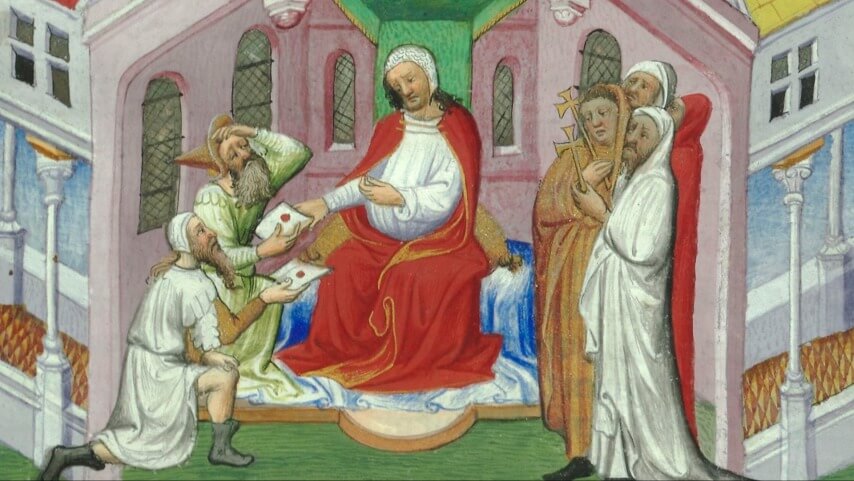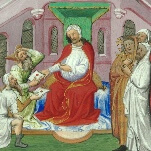Strangest fact: The closest thing to a real-life Prester John turned out to be Genghis Khan. After the disastrous (for Christians) Fifth Crusade, news came back to Europe that an eastern power had conquered Persia and was marching on Baghdad. Hopeful Europeans identified this ruler as Prester John’s son or grandson (possibly named King David Of India), come to win the Holy Land for Christendom once and for all.
It quickly became clear that Genghis Khan’s armies were neither Christian nor the saviors of Europe, and the legend shifted—Prester John had stood up to the great Khan, and in most versions of the legend, paid for that with his life.
Thing we were happiest to learn: The search for Prester John at least made Europeans better at geography. While Genghis Khan was a danger to any kingdom unfortunate enough to share a border with the Mongol Empire, within the Empire, one could safely travel the length and breadth of Asia, and many Europeans did (some in search of Prester John, but most establishing trade routes.)
With Asia a dead end, Prester-wise, Europeans turned their eyes towards Africa. Ethiopia was, in fact, an isolated Christian kingdom in a predominantly Muslim region, but Europe had had little contact through the Crusades, and Ethiopia was often conflated with India. While there was no Prester John there either, Europeans did at least fulfill the dream of a Christian ally on another continent, as Ethiopia made an alliance with Portugal to fight off their mutual enemies.
Thing we were unhappiest to learn: The search for Prester John continued to the point of absurdity. Once Ethiopia was ruled out, Peter Martyr d’Anghiera, a 16th-century Italian historian, interviewed Francisco de Chicora, a Native American kidnapped by the Spanish and brought to Europe in 1526. d’Anghiera identified de Chicora’s homeland as the mythical kingdom of Prester John; we now call it South Carolina.
Best link to elsewhere on Wikipedia: Prester John has a Jewish equivalent. Eldad ha-Dani wasn’t a mythical figure, but a real 9th-century man who claimed to be from a Jewish state in east Africa, populated by descendents of four of the Lost Tribes Of Israel. He claims to have found the country after being shipwrecked nearby, and claimed they, “live in peace and comfort,” but that the four tribes each take turns three months out of the year in an endless war against neighboring Ethiopia, in which, “every warrior remains in the saddle without dismounting from one Sabbath to the next.” His story was broadly accepted as true, although no such kingdom actually existed.
Further down the Wormhole: In the years leading up to Portugal’s alliance with Ethiopia, they sent two envoys, Pero da Covilhã and Alfonso de Paiva, to look for a sea route to India, but also for Prester John. Portugal sent envoys all over the world in the Age of Exploration, including Gil Eanes, who charted the West African coast, including Angra dos Ruivos, a bay named for the tetra fish found there. Tetras are tiny warm-weather fish popular with aquarium owners for their metallic scales, and one variety, the black neon tetra, once committed credit card fraud. We’ll look at this underwater financial scandal, and other quick-hit stories, to wrap up the year.








































